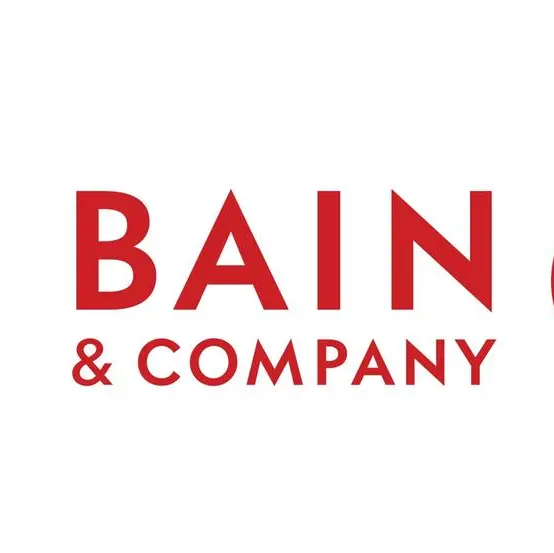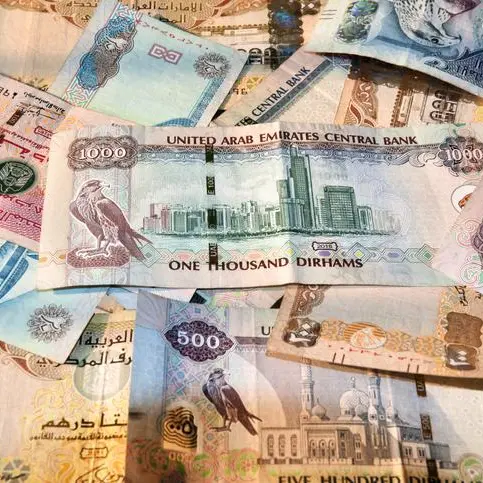PHOTO
Economy graph. Getty Images Image used for illustrative purpose.
Fitch Ratings - London: Fitch Ratings has affirmed Kuwait's Long-Term Foreign-Currency Issuer Default Rating (LTFC IDR) at 'AA-' with a Stable Outlook.
A full list of rating actions is detailed below.
Key Rating Drivers
Fundamental Rating Strengths and Weaknesses: Kuwait's 'AA-' rating is supported by its exceptionally strong fiscal and external balance sheets. The rating is constrained by weaker governance indicators than peers', Kuwait's heavy dependence on oil, its generous welfare system and large public sector that could be challenging to sustain in the long term. Another weakness is the continued absence of both meaningful fiscal adjustment to address structural challenges and legislation to allow debt issuance and improve fiscal financing flexibility.
Exceptionally Strong External Assets: Kuwait's external balance sheets remain the strongest of all Fitch-rated sovereigns. We forecast Kuwait's sovereign net foreign assets will rise to 538% of GDP in 2024 and average 553% in 2025-2026, more than 10x the 'AA' median. The bulk of the assets are held in the Future Generations Fund managed by the Kuwait Investment Authority (KIA), which also manages the assets of the General Reserve Fund (GRF), the government's treasury account.
Parliament Suspended, Endling Political Deadlock: The Amir has dissolved parliament and suspended parts of the constitution for no more than four years, during which the country's democratic process will be reviewed to address its shortcomings. This followed the April 2024 parliamentary election, the fourth since December 2020 and eighth since 2012. Fitch believes this should smooth policymaking, which has been hindered by the long-standing political deadlock between the government and parliament. However, this could affect voice and accountability, and uncertainties over the implementation of critical structural and fiscal reforms weigh on the rating.
Reform Implementation Timeline Uncertain: The newly-appointed government has yet to unveil its four-year policy programme. Initial reform plans focus on diversifying oil revenue, improving government efficiency, rationalising government spending and capping medium-term expenditure at KWD24.5 billion (48% of projected GDP the fiscal year ending March 2025; (FY24)), which is slightly below FY23's. While parliamentary gridlock is no longer an obstacle, the timeline for implementing key reforms remains uncertain. The government also faces a backlog of laws requiring revision, likely limiting prospects for significant reforms in the near term.
Liquidity Law Assumed; Timeline Uncertain: The government aims to pass a liquidity/debt law (as previous governments have), which is currently under revision, but the implementation timeline is uncertain. The enactment of this law would enable Kuwait to raise new debt, following the expiry of the previous debt law in 2017. Our forecasts assume that a liquidity law will be passed in FY25, although delays are possible. Even without a liquidity law, the government would still be able to meet its financing obligations in the coming years, given the assets at its disposal.
Budget Position to Deteriorate: Under the government's reporting convention, which excludes KIA's investment interest income in revenue, and which is not officially disclosed, we expect the budget deficit to widen in FY24. The government plans to rationalise spending in line with its expenditure target, which we anticipate is achievable through modest reductions in non-core expenditures and continued under-spending of the budget. However, significant reform of the generous public employment and welfare spending (81% of total expenditure; 41% of GDP) is unlikely, thereby keeping total expenditure near the target ceiling.
We expect revenue to continue to decline, even as non-oil revenue rises modestly. Oil revenue loss from lower oil prices is partly mitigated by the potential unwinding of OPEC+ oil production quotas from 4Q24. Under the government's convention, we expect the deficit to widen to 4.4% of GDP in FY24, from 3.1% in FY23, and further to 6.0% in FY25. Including an estimate for investment interest income, we forecast the budget to post lower surpluses of 7.8% of GDP in FY24 (from 7.9% in FY23) and 5.3% in FY25.
Continued Reliant on GRF Financing: Our FY24 forecasts assume that the government will continue to rely on GRF's assets to cover its budget deficit and meet domestic maturities. Our FY25 forecast assumes that the government will resume borrowing, with about 30% of deficit being financed by debt issuance.
Oil Assumptions: Our forecasts assume Kuwait's average oil price at USD79.7/bbl for FY24, down 5.1% from FY23, with output declining to 2.42mmbbl/d given OPEC+ constraints. In FY25, we assume Kuwait's average oil price will fall to USD71/bbl, while crude oil output will rise to 2.51mmbbl/d, as OPEC+ eases constraints. Under this scenario, we anticipate a nearly 4% rise in oil production in FY25 compared with FY24. We estimate Kuwait's fiscal break-even Brent oil price (including investment income) at USD58-61/bbl in FY24-FY25, with the non-oil primary deficit/non-oil GDP at 70%-76%, significantly worse than regional peers'.
Very Low Government Debt: Gross government debt/GDP remains low, at 3.1% of GDP in FY23. We expect the debt level to remain broadly unchanged in FY24, but assuming the passage of a liquidity law in FY25, along with projected deficits and lower oil prices, we forecast government debt will rise to 4.8% of GDP in FY25 and further in FY26, despite a USD4.5 billion Eurobond maturing in March 2027. Nonetheless, we expect debt levels to remain well below the projected 2025 'AA' median of 50% of GDP.
Regional Conflict Risk; Oil Dependence: Ongoing conflicts in the Middle East and disruptions to Red Sea shipping have had minimal impact on Kuwait, which has large government assets that provide an important buffer to support the economy if tensions were to escalate. However, hydrocarbon dependence weighs on Kuwait's rating. Kuwait remains heavily dependent on oil revenue, with budget outcomes highly sensitive to oil prices. A USD10/bbl change in our oil price assumption for 2024 would affect the budget balance by about 4% of GDP, all else being equal. A change of 100,000bbl a day of production affects the budget by 1.5% of GDP.
ESG - Governance: Kuwait has an ESG Relevance Score (RS) of '5[+]' respectively for both Political Stability and Rights and for the Rule of Law, Institutional and Regulatory Quality and Control of Corruption. Theses scores reflect the high weight that the World Bank Governance Indicators (WBGI) have in our proprietary Sovereign Rating Model (SRM). Kuwait has a medium WBGI ranking at 53, reflecting low scores for voice and accountability, and middling scores across other governance indicators.
RATING SENSITIVITIES
Factors that Could, Individually or Collectively, Lead to Negative Rating Action/Downgrade
-Structural Features/Public Finances: Signs of sustained pressure on GRF liquidity, for example, due to the continued absence of a new liquidity law and of alternative measures to ensure that the government can continue to meet its payment obligations, including but not limited to debt service
-Public and External Finance: Significant deterioration in fiscal and external positions, for example, due to a sustained period of low oil prices or an inability to address structural drains on public finances
Factors that Could, Individually or Collectively, Lead to Positive Rating Action/Upgrade
- Structural Features/Public Finances: Strong evidence that Kuwait's institutions and political system are able to tackle long-term fiscal challenges, for example, through actions to implement a clear deficit reduction plan that is resilient to lower oil prices, as well as adopt a transparent and sustainable government funding strategy.
Sovereign Rating Model (SRM) and Qualitative Overlay (QO)
Fitch's proprietary SRM assigns Kuwait a score equivalent to a rating of 'AA+' on the LTFC IDR scale.
Fitch's sovereign rating committee adjusted the output from the SRM to arrive at the LTFC IDR by applying its QO, relative to SRM data and output, as follows:
- Structural Features: -1 notch, to reflect a political context that has prevented meaningful progress in enacting key economic reforms and addressing structural public finance challenges stemming from heavy oil dependence, a generous welfare state and a large public sector, and adopting a transparent and sustainable financing strategy
- Public Finances: -1 notch, to reflect our expectation of continued budget deficits and rising debt over the short- to medium term, due to persistent difficulties of reining in a generous public employment and welfare system that could pose challenges if oil revenues decline for a sustained period of time, even as the large government assets provide an important buffer
Fitch's SRM is the agency's proprietary multiple regression rating model that employs 18 variables based on three-year centred averages, including one year of forecasts, to produce a score equivalent to a LTFC IDR. Fitch's QO is a forward-looking qualitative framework designed to allow for adjustment to the SRM output to assign the LTFC IDR, reflecting factors within our criteria that are not fully quantifiable and/or not fully reflected in the SRM.
Country Ceiling
The Country Ceiling for Kuwait is 'AA+', two notches above the LTFC IDR. This reflects strong constraints and incentives, relative to the IDR, against capital or exchange controls being imposed that would prevent or significantly impede the private sector from converting local currency into FC and transferring the proceeds to non-resident creditors to service debt payments.
Fitch's Country Ceiling Model produced a starting point uplift of two notches above the IDR. Fitch's rating committee did not apply a qualitative adjustment to the model result.
REFERENCES FOR SUBSTANTIALLY MATERIAL SOURCE CITED AS KEY DRIVER OF RATING
The principal sources of information used in the analysis are described in the Applicable Criteria.
The following limitations were identified and addressed:
KIA's assets are not officially reported by the government.
Fitch estimates these assets by compounding the government's transfers into the KIA, using assumptions about returns and asset allocations that are informed by discussions with the KIA. Fitch benchmarks government transfers into the KIA and KIA investment income against the balance of payments.
The data used was deemed sufficient for Fitch's rating purposes because it expects that the margin of error related to the estimates would not be material to the rating analysis.
ESG Considerations
Kuwait has an ESG Relevance Score of '5[+]' for Political Stability and Rights as WBGI have the highest weight in Fitch's SRM and are, therefore, highly relevant to the rating and a key rating driver with a high weight. As Kuwait has a percentile rank above 50 for the respective governance indicator, this has a positive impact on the credit profile.
Kuwait has an ESG Relevance Score of '5[+]' for Rule of Law, Institutional & Regulatory Quality and Control of Corruption as WBGI have the highest weight in Fitch's SRM and are, therefore, highly relevant to the rating and are a key rating driver with a high weight. As Kuwait has a percentile rank above 50 for the respective governance indicators, this has a positive impact on the credit profile.
Kuwait has an ESG Relevance Score of '4' for Human Rights and Political Freedoms as the Voice and Accountability pillar of the WBGI is relevant to the rating and a rating driver. As Kuwait has a percentile rank below 50 for the respective governance indicator, this has a negative impact on the credit profile.
Kuwait has an ESG Relevance Score of '4[+]' for Creditor Rights as willingness to service and repay debt is relevant to the rating and is a rating driver for Kuwait, as for all sovereigns. As Kuwait has a record of 20+ years without a restructuring of public debt and captured in our SRM variable, this has a positive impact on the credit profile.
Except for the matters discussed above, the highest level of ESG credit relevance, if present, is a score of '3'. This means ESG issues are credit neutral or have only a minimal credit impact on the entity, either due to their nature or to the way in which they are being managed by the entity. Fitch's ESG Relevance Scores are not inputs in the rating process; they are an observation of the materiality and relevance of ESG factors in the rating decision. For more information on Fitch's ESG Relevance Scores, visit www.fitchratings.com/esg
-Ends-
Media Contact
Elizabeth A. Fogerty
Senior Director, Corporate Communications
Fitch Group
elizabeth.fogerty@fitchratings.com




















